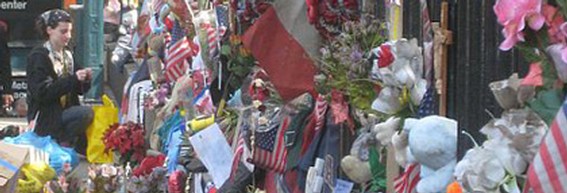Absence: A Reflection
From Harlem and Morningside Heights, Line 2 of the New York Subway runs under Central Park and Broadway, veering east as it nears Park Place and Ground Zero. For nearly half an hour I kept rereading the ads on both sides of the subway car. One string of placards urged passengers to “Get on the Road to a Bright Future,” courtesy of New York’s community colleges. Several young faces—diverse, self-assured, proud of their caps and tassels—proclaimed that opportunity was there for grabs. With urban populations and unemployment rising, New York’s community colleges—like all urban two-year institutions—will have vital roles to play if the nation is to improve its college graduation rates, no longer among the world’s best. Across the aisle, however, the signs were still searching for the silent victims of the past: “Lived There? Worked There? You Deserve Care.” Each cardboard placard had a story and a medical checklist: one man’s tale of depression, one woman’s battle with asthma, another’s claim of insomnia and nightmares. A decade after 9/11, health officials still worried about the lungs—and the R.E.M.—of the survivors.
Over the Labor Day weekend Arlyne and I went to New York City to spend time with our son, and the three of us visited the site of the catastrophe. As the tenth anniversary of 9/11 has approached, I have struggled to find words that might be appropriate both to our own college mission and the legacy of that infamous morning. So we decided simply to go to the scene and to observe.
To be honest, we never truly saw Ground Zero, site of the new 9/11 Memorial. The chain-link fences around the construction zone were masked with canvas tarps, blocking any premature glimpses prior to the September 12 opening. We could merely listen to the churning of the cement trucks beyond the fences, all of them pressing to meet the imminent deadline. Standing there, hearing the wheels roll their cargo of sand and mortar, I could not help but think of the massive shower of cement dust cascading over these streets from a hundred stories above. A full decade after that death and ruin—and a few days before the square’s formal rebirth—we were left to find our stories on the periphery.
And there were stories hovering around the fences. Local charities sold FDNY hats right alongside vendors who pushed photos of the flight-fuel inferno. At the corner of Vesey and Greenwich, a few conspiracy theorists lured over two dozen people with claims that the trade towers—as well as the neighboring WTC building—had been rigged with explosives prior to the planes’ impact. Within earshot of their pleas, the World Firefighter Games awarded medals to the winners of the bicycle competition, a ceremony set eerily near the scene where so many firefighters met their end. As I watched the winning Spaniards step onto the medal platform and unveil their national flag, I recalled their own railway terror during al-Qaeda’s 2004 attack in Madrid.
On the morning of September 11, 2001, one of the first members of a rescue team to die was the firefighters’ Franciscan chaplain. His body, struck by a falling beam, was blessed by a policeman unable to locate a priest for the last rites, and then laid in front of the altar at Old St. Peter’s Cathedral, a long city block from Ground Zero. The cathedral would be largely spared, despite damage to the roof and an organ decimated by the dust and smoke. When we walked by the church, we stopped for a while beside a glistening crucifix erected as a tribute to the victims, set against the wall of the nave. Designed to look like twisted metal debris welded into a cross, the sculpture is actually hollow. It was built in California, and then driven across the continent so that relatives and friends of the slain could stuff memorabilia, prayers and notes into the empty arms. So much of the lingering grief from that morning is now internal, lodged within cavities of hearts and memory while the city tries to restore its luminous, municipal face.
That tension between private grief and public serenity will be continually played out in the minds of visitors to the Memorial plaza. The design for that plaza has been on display at the 9/11 Preview Site, a temporary, storefront museum full of artifacts from the calamity. With the anniversary so near, the Preview Site was crammed during our visit, and we pressed through the crowds to see drawings of two large reflecting pools, each about an acre square and set within the footprints of the lost towers. Selected from over 5000 applicants, the final design is entitled “Reflecting Absence,” and the illustration was equal to its haunting label. Each pool will rest nearly thirty feet below ground, at the base of cascades falling from all four sides. Around the rectangular borders of the pools the names of nearly 3000 dead—those in Manhattan, as well as in Pennsylvania and the Pentagon—will be inscribed in bronze. More than 400 swamp white oak trees have been planted throughout the public square, along with a single pear tree rescued ten years ago from the rubble. In autumn their leaves will follow the winds toward the Hudson or East River, spill into Wall Street and Battery Park, or strike against the blue opaque glass of the new One World Trade Center, now eighty stories high, well on the way to becoming the nation's tallest building. Business and hotels are thriving in lower Manhattan; occupancy rates for apartments have more than doubled since 2001. The tragic day appears to have inspired commerce.
In time, I am sure, we will be back in New York to walk beside the pools and rushing water. For me, water in motion is almost always life-giving: few sounds are as invigorating as the white rapids carving through the granite boulders of a mountain stream or the roll of waves against the sand. No doubt, many mourners will find in the plaza’s steady falls, thick shade, and tranquil pools a measure of comfort for the absence of friends and loved ones. But the reflecting pools will also invoke the disappearance of the former towers and their occupants, even as the sun-struck waters will capture the gray, rouge, and blue skies above. Different viewers, I suppose, will see different evidence in that reflection for the presence or absence of God.
Immediately after the catastrophe hundreds of Americans came to New York’s churches to seek the presence of God. Many crowded into St. Paul’s Chapel, the old, brownstone church at the foot of the towers that, quite miraculously, emerged from the disaster almost unscathed. On the south side of the chapel we saw the red, spiderlike sculpture in honor of the roots of an old sycamore tree that shielded the church from destruction, even though its own limbs were crushed by debris. Known for its Bach concerts, the Anglican chapel still “welcomes all”—Christians, Jews, Muslims, and skeptics—in memory of the days when so many sat in the pews to meditate, pray and seek meaning.
The devastation of 9/11, though, often seems to be beyond our capacity for a narrative frame, either political or theological. Most immediate attempts to explain the disaster served pre-existing ideological ends. With shameless speed, a few prominent Christians had called the burning of thousands of innocent bodies a divine judgment in the culture war, even while some television networks simplistically reduced the tragedy to a clash of cultures. At a subway kiosk, I picked up a copy of The Economist, with a lead editorial praising American vigilance against terror but confessing that the journal had been misled by the trumped-up claims of weapons in Iraq. We will never know, the journal admits, just how many lives have been spared by a decade of heightened watchfulness, even though we can count the brutal costs of the post-9/11 wars: the loss of at least 6,000 American soldiers and 137,000 civilians in Iraq, Pakistan and Afghanistan. Nearly 8 million people from those nations are now refugees. If anything, a decade has made us more modest in our claims about political and providential designs.
Perhaps, after all, what this anniversary may remind us is that God calls us to such intellectual modesty—to live self-reflectively and passionately even though we can only reach the periphery of the most difficult questions, striving to act wisely in the midst of the ambiguities. In so many ways, the rival duties of a Christian liberal arts college were outlined in that New York Subway car—we need the boldness to engender freedom, hope and opportunity for new generations, even as we remind them of the unresolved suffering, injustice and fear that endures from the past. My visit to Ground Zero prompted me to consider, with mixed emotions, how adequately our curriculum has prepared a new generation for that task. In the immediate aftermath of the disaster, there were so many themes that seemed essential—greater knowledge of world religions, global economies and cultural histories, as well as a wider range of Christian ideas about politics, ethics and accountability. Some of those intentions, of course, get pruned when we must make pragmatic choices about priorities and resources, but such a fierce anniversary should also be a time for us to review what moral responsibilities and worthy ambitions we may have set aside.
That visit also made me consider how much the presence of God is evident in the periphery—in the unfathomable acts of sacrifice to find survivors, recover corpses, and minister to the grieving. Arriving at Ground Zero, I was struck by how barren that chain link fence seemed without the makeshift tributes—the photos, notes, flags, crosses, flowers, rosaries, ribbons, and poems posted publicly in gestures of desperation and lament. This week, St. Paul’s Chapel has invited parishioners and guests to revive that spirit by tying ribbons with handwritten prayers to its iron-grill fence. With so many books, recordings and media specials prepared for the anniversary, the church wanted its ritual of remembrance to be tactile and spontaneous. Even as I have written these words, I have wondered if the angst that I personally feel about this anniversary is that I missed the tactile. Without friends or loved ones lost on 9/11, I remained aloof, ending up a bystander during one of the most memorable seasons of American compassion. And, beyond the well-told tales of New York’s firefighters and medics, there are hundreds of believers still trying to be the face of Christ to the victims—those Manhattan survivors haunted by dreams, those children and refugees maimed by subsequent wars. If we must strive continuously to reach the justice that will never be fully within our grasp, we can still learn to see the grace that is often closer than we know.


 Essays about Gordon
Essays about Gordon


